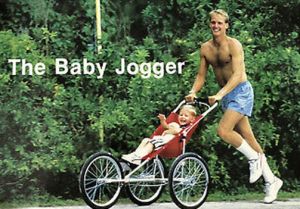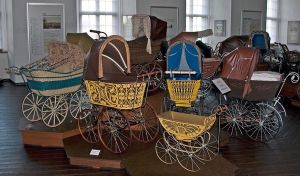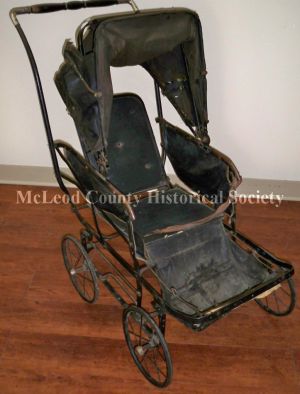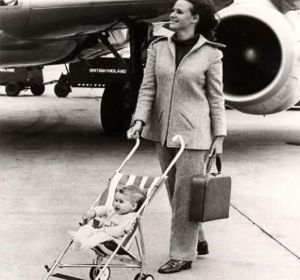Main Page: Difference between revisions
| Line 112: | Line 112: | ||
Unlike the bulky prams of the 1930’s and 40’s, new strollers were smaller and more compact. A good example was the Taylor Tot, made by the Frank Taylor Company of Cincinnati, OH. | Unlike the bulky prams of the 1930’s and 40’s, new strollers were smaller and more compact. A good example was the Taylor Tot, made by the Frank Taylor Company of Cincinnati, OH. | ||
This stroller featured a metal chair, frame and wheels—more like a tricycle with a push handle than a modern stroller. | This stroller featured a metal chair, frame and wheels—more like a tricycle with a push handle than a modern stroller. | ||
Revision as of 20:37, 18 August 2023
Welcome to StrollerWiki—the Wikipedia site for baby strollers. Pardon our dust . . . we are working on building this site!
This site provides detailed info on major baby stroller makers (more to come):
- BABYZEN
- BOB
- Baby Jogger
- Baby Trend
- Bombi
- Britax
- Bugaboo
- Century
- Chicco
- Cosco
- Cybex
- Delta Children
- Diono
- Doona
- Evenflo
- Gb
- Graco
- Joolz
- Joovy
- Keenz
- Kolcraft
- Larktale
- Maxi Cosi
- Mockingbird
- Mompush
- Mountain Buggy
- Nuna
- Peg Perego
- Phil & Teds
- Safety1st
- Summer Infant
- Thule
- UPPAbaby
- Veer
- Wonderfold
| Did you know . . . |
|
|---|
A Brief History of the Baby Stroller
William Kent is widely considered the father of the modern baby stroller, designing a carriage for the Duke of Devonshire in 1733. But was this really the first baby stroller?
Before the modern era
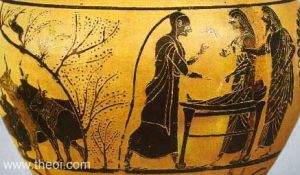
There are a few references to conveyances used to carry babies and children earlier that 1733. A 520 BCE Etruscan vase depicting Hermes stealing Apollo’s cattle is said to depict Hermes as a baby in a wheeled conveyance—although this looks more like a wheeled cradle than a stroller.[2]
Oddly, there are no references to wheeled baby carriages in Egyptian, Roman or Greek historical documents—most babies were carried during this part of history. However, wheeled toys were quite common.
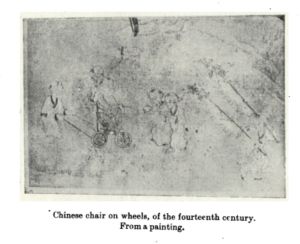
Along that vein, a Japanese painting from the 14th century shows a Chinese baby in a carriage with wheels pulled by a rope.[4]
Wheeled toys were also found in India, Ceylon (now Sri Lanka) and even Meso-America, leading some to believe that wheeled carriages and carts were also common. However, it wasn’t until improvements in roads and pavement that chariots, wheeled carriages and large wagons were used broadly. In England, enclosed carriages for passengers were first introduced in 1555.[5]
That’s not to say parents didn’t adapt carts and small wagons to multiple uses including carrying children. An example are the hop wagons in Kent in the UK, which came from Europe in the 16th century.[6]
First known baby carriage
A watershed moment in baby strollers came in 1733. A landscape architect working for the Duke of Devonshire, William Kent, designed the first baby stroller as a way to “amuse his children in transit.”
Designed to be pulled by ponies, dogs or goats, the Duke of Devonshire’s Chatsworth Serpent Pram was named for snakes that adorned the carriage (the Duke of Devonshire’s crest has snakes). Given the extravagant cost of the carriage, this one-off creation wasn’t intended to spur an industry of baby buggies.
It would take another century—and the rise of the Industrial Revolution and the middle class—before strollers became standard parenting equipment.
Fast forward to the 1830’s when the first craftsmen began building and selling baby carriages. The Industrial Revolution and world-wide trade made it possible to build quantities of baby carriages. Benjamin Potter Crandall and his son Jesse marketed the first baby carriages in the US in the 1830’s. Jesse later invented several improvements including a brake and parasol.[7]
At the same time, the US market for baby carriage makers was booming. Many of these companies were located in Massachusetts. In Greenfield, MA, J.P. Prentice built a baby carriage for his daughter, who was born in 1835. Greenfield later became known as a center of baby carriage manufacturing as fellow stroller makers Henry Warner, J. Morris Munson and Frank and Samuel Boylston set up shop in the area.
Meanwhile in Europe, the Germans began making carriage strollers in Zeitz, Germany in 1846 when Albert Naether founded his workshop. It later grew into one of Europe’s largest maker of baby carriages and prams.[8]
Push not pull
Prior to 1848, all baby carriages were pulled by pony, dog or goat. Charles Burton, an American inventor, designed the first baby stroller that could be pushed by an adult. He took his design to London in 1848, where he successfully introduced it to the British. He adopted an existing expression for “walking about” to name his stroller—perambulator, later shortening the term to pram.[9]
The word “perambulator” dates back to the 1560’s:
“walk through, about, or over," 1560s, from Latin perambulatus, past participle of perambulare "to walk through, go through, ramble through," from per "through" (from PIE root *per- (1) "forward," hence "through") + ambulare "to walk, go about" (see amble (v.)). Related: Perambulated; perambulating.[10]
Changes in parenting styles (and the expansion of the middle class in England) also factored into the rise of the stroller.
Instead of keeping children at home, popular English pastimes like Sunday promenades for health and social interaction promoted introducing children to the outside world sooner. The baby carriage made that interaction much easier for stylish young parents.
The British became leaders in pram production in the late 1800’s. You can find numerous examples of British prams at historical museums with their very high wheels, suspensions, bassinette-style wicker baskets, leather hoods and brakes (PHOTO from German Museum). Seat belts were patented for baby carriages in 1884.[11]
In 1888, African American inventor William H. Richardson patented the first reversible carriage basket and in 1894 the British patented a reversible handle.[12]
19th Century
The first patent for a folding baby stroller in the US was issued in 1904. The Allwin was made by the Sidway Mercantile Company in Elkhart, IN. They were also called the “Go-cart from Elkhart.”[13]
By the 1920’s Britain boasted over 200 pram makers and with three million units in use by 1923.[14] Wheels in the 20’s and 30’s got smaller and the first pushchair, ancestor of the modern stroller, first appeared. Pushchairs were not as popular as prams, however.
Meanwhile, in the US, several famous baby carriage makes continue to prosper.
F.A. Whitney Carriage Co. was founded in Leominster, MA in 1858 and patented a reversible handle in 1876.
Up until 1881, the company made the baby carriage bodies out of wood. In 1881, F.A. Whitney began experimenting with wicker (made of willow). Later in 1904, the company began making paper wicker (“twisted paper pregnated with glue sizing”) pg 23 which they patented. The paper lasted longer (if taken care of) than the willow reed wicker, which dried out and cracked.[15]
Many of US baby carriage makers didn’t survive the Great Depression and rationing of materials during World War II. F.A. Whitney closed its doors in 1952.
Baby Boom: Post War Surge in Baby Gear
Imagine adding 4.24 million babies to the US population every year. That actually happened between 1946 and 1964.[16] With that many babies born each year (and that’s just an average per year; some years had more), it’s no surprise that baby products from cradles to high chairs to strollers also surged during that period. Immediately after the war, baby carriages continued to be popular, but by the 1950’s to 1960’s, strollers started to make inroads with young parents.[17]
Why? Americans moved to the suburbs, had more leisure time and had more money to spend.
The suburbs had miles of paved sidewalks and streets—and the stroller boom took off.
The post World War II baby boom gave rise to baby gear companies like Evenflo (which started as a bottle maker) and Graco, which launched in 1957 with a swing.
Unlike the bulky prams of the 1930’s and 40’s, new strollers were smaller and more compact. A good example was the Taylor Tot, made by the Frank Taylor Company of Cincinnati, OH.
This stroller featured a metal chair, frame and wheels—more like a tricycle with a push handle than a modern stroller.
Rise of the Imports: British Invasion
In 1965, British engineer Owen Maclaren, a former test pilot, designed the first “umbrella” stroller, made of lightweight, aircraft aluminum and designed to fold into a compact design similar to an umbrella. Maclaren imagined his new stroller would allow parents to travel the world more easily.[18]
On the heels of the British invasion, the Italians came to the US as well in the 60’s—Italian stroller maker Peg Perego set up shop in Fort Wayne, Indiana to be close to their largest customer, Sears.
- ↑ https://babel.hathitrust.org/cgi/pt?id=njp.32101068130804&seq=15
- ↑ https://babel.hathitrust.org/cgi/pt?id=njp.32101068130804&seq=15
- ↑ https://www.jstor.org/stable/41356294
- ↑ https://www.jstor.org/stable/41356294
- ↑ https://www.britannica.com/technology/coach-horse-drawn-vehicle
- ↑ https://www.jstor.org/stable/41356294
- ↑ https://www.thoughtco.com/history-of-baby-carriages-4075936
- ↑ https://www.atlasobscura.com/places/deutsches-kinderwagenmuseum-german-stroller-museum
- ↑ https://www.thoughtco.com/history-of-baby-carriages-4075936
- ↑ https://www.etymonline.com/word/perambulate
- ↑ https://www.atlasobscura.com/places/deutsches-kinderwagenmuseum-german-stroller-museum
- ↑ https://patents.google.com/patent/US405600A/en
- ↑ https://mcleodhistory.pastperfectonline.com/webobject/2BAD2E47-9031-4E9A-9167-150378652989
- ↑ https://www.jstor.org/stable/d44d4702-7cc5-39e9-910f-06d0017ec3fc?seq=1
- ↑ https://babel.hathitrust.org/cgi/pt?id=njp.32101068130804&seq=1
- ↑ https://www.khanacademy.org/humanities/us-history/postwarera/postwar-era/a/the-baby-boom
- ↑ http://www.faqs.org/childhood/Pa-Re/Pram.html
- ↑ https://shop.maclarenbaby.com/history-heritage?ctr#:~:text=In%201965%20in%20rural%20England,baby%20wheeling%20around%20a%20bulky
